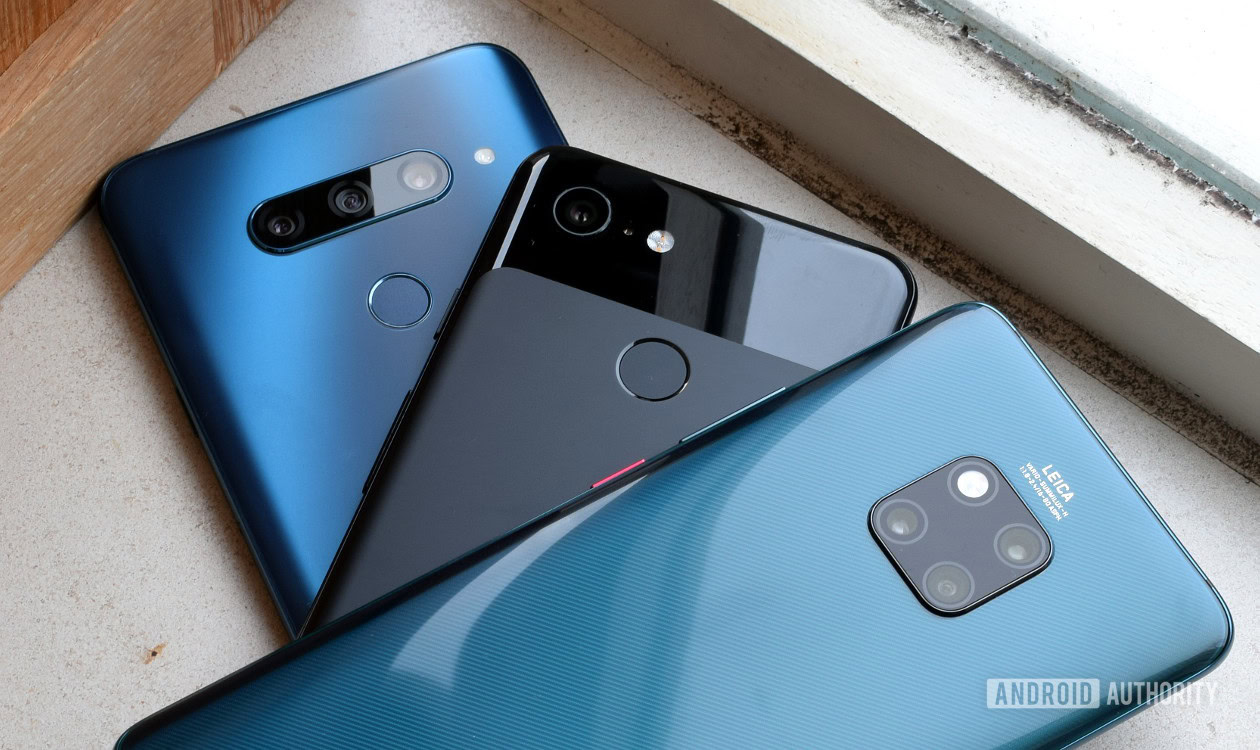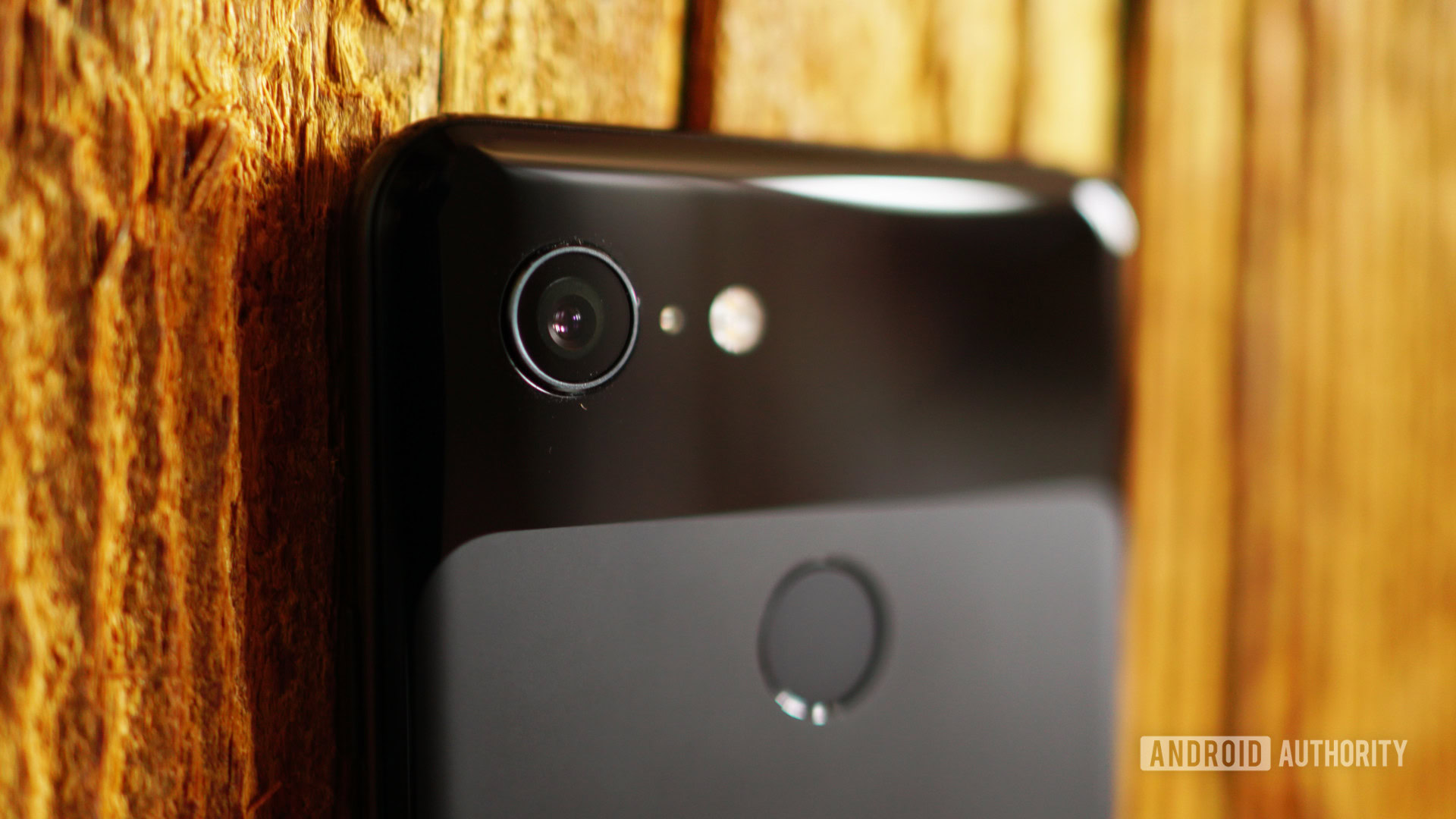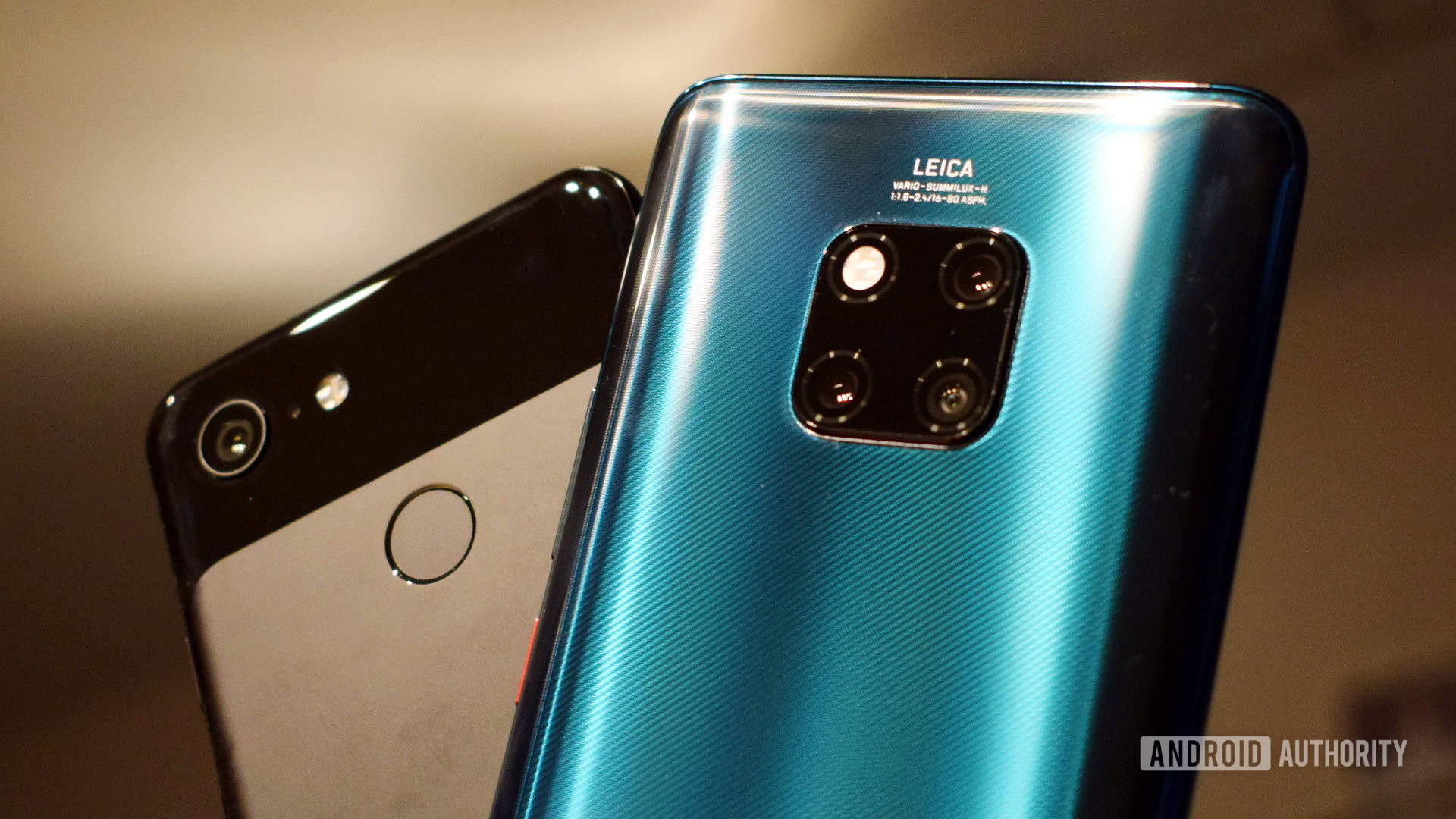Affiliate links on Android Authority may earn us a commission. Learn more.
Do AI cameras matter? LG V40 vs HUAWEI Mate 20 Pro vs Google Pixel 3 edition

AI camera features are packed into so many smartphones these days, promising to make our pictures look better by understanding the scene we’re trying to capture. However, the improvements on offer are seldom properly explained, making it hard to know exactly how AI helps make our pictures better — if at all.
Today we’re taking the new HUAWEI Mate 20 Pro, LG V40, and Google Pixel 3 out for a spin to see how their AI capabilities help take better pictures. HUAWEI and LG AI technologies use scene detection algorithms to adjust color profiles and post-processing accordingly. Google leans heavily on machine learning-based HDR+ post-processing to enhance all of its pictures through its Visual Core hardware. Are either of these techniques better?
Outdoors
Greenery / Landscape
The Google Pixel 3 typically excels in situations with tricky exposure and leaps out of the gate with an excellent improvement in this overcast image. With HDR+ enabled, color grading switches from overly brown and dark to vivid with a much improved dynamic range and white balance. This first image is a night and day difference and really shows off what Google’s technology can do.
Huawei’s AI detected this scene as “Greenery,” and really ramped up saturation to highlight the grass and trees with the P20 Pro. With the Mate 20 Pro, there’s barely any difference between AI on and off. The only change I can see is an ever so slight vibrancy boost to the distant grass.
Everything did better than the LG V40 in this case. The V40 AI opted for its “Clouds” rather than “Landscape” setting here, which might have been the wrong choice. The dynamic range of the trees and grass diminishes and the lack of shadows flattens out the image. Meanwhile, the whole picture takes on an overly warm, brown hue that looks very out of place on a cold, overcast day.
Sunset
This one is a little bit of a trick as it’s a painting, but it shows how the cameras handle scenes rich in blues, such as the sky, sea, or beach. The LG V40 offers the most striking tweak to the image. The phone correctly identifies the scene as a sunset and increases the vibrancy of oranges and reds as a result. Although the AI couldn’t quite make its mind up between this setting and a horribly yellow looking “Sky” preset.
The HUAWEI Mate 20 Pro also detected this scene as a sunset. It offers a much more subtle boost to the oranges and reds than the LG V40 and certainly doesn’t overdo it. Although I feel the level of adjustment isn’t enough to warrant the use of a dedicated AI mode.
The Google Pixel 3, by comparison, doesn’t offer much improvement to the colors. Instead, the HDR processing goes into overdrive, increasing the amount of shadow and dark detail capture over the non-HDR image, and ending up looking a bit too dark in places. The added sharpness and clarity is nice, but mostly HDR is making up for the camera’s rather lousy basic performance.
Close up
Food
Social media loves a good food picture and it’s no surprise our AI cameras are pretty snappy at detecting foods and fruits to make them pop.
The HUAWEI Mate 20 Pro hits these requirements by upping the color saturation and the contrast in general, making colors pop and focusing attention on the food. The original image was already well exposed, but AI helps to make the food look even more appealing.
The Google Pixel 3 with HDR+ appears very similar to the HUAWEI Mate 20 Pro’s AI picture. Colors are slightly boosted over the non-HDR image, but mostly the camera corrects the Pixel 3’s over exposure in the background and brightens up what was originally a slightly dark image.
In this instance, the LG V40 is way over the top and certainly scores worst out of the three. Saturation is upped to a highly unrealistic degree, making the food look radioactive. This setting might work out in some instances, but it definitely doesn’t in this picture.
Flowers

Both the LG V40 and HUAWEI Mate 20 Pro offer flowers scene detection options. The general tendency is to boost color saturation so the petal colors really pop. Compared with our previous shootout, the results seem a little more subdued this time around. Again HUAWEI has really dialed back the saturation boost in the Mate 20 Pro compared to the P20 Pro. There’s a mild boost to color saturation but that’s it. The LG V40’s AI assistant produces a more dramatic effect.
Interestingly, the HUAWEI Mate 20 Pro also suggested switching to the wide-angled camera for a macro-shot mode. The Mate 20 Pro’s wide angle camera can retain focus at very close ranges, so it’s also very useful for shots like this.
The LG V40 produces the most striking result here, which works well for the subject content. We’re after bright, vivid colors and the V40 AI offers the best improvement. Although it could be argued that the original image is too washed out to begin with.
As with the Pixel 2, Google’s Pixel 3 gets the colors all wrong using HDR+ in this scenario. The purple flower takes on a blue tint and the rest of the image becomes more washed out with the setting switched on. The Pixel 3’s processing is usually pretty consistent, but in this instance it balances out the colors far too aggressively and gets it completely wrong.
Bokeh blur
Bokeh blur is a common software feature all price points, and it’s one of the more useful and interesting applications where machine learning can make a major difference. Google relies heavily on machine learning for its bokeh blur with the Pixel 3 and the results are rather good. There are still lingering issues with inner edge detection and particularly noticeable issues with focal points at the background-foreground cutoff point. See the pebbles in the sample below and how the plant pot is blurred on the right side but not in the center.
The HUAWEI Mate 20 Pro is a very close match to the Pixel, but I actually think it does better. It’s more flexible thanks to its adjustable focal point post shot. It also blends much more smoothly and accurately between the fore and background, suggesting its algorithm is better at calculating distance. However, the Pixel is a tad more consistent when it comes to transparent edge detection.
The LG V40 is way off the mark in this comparison. Its algorithm appears to be based on simple edge detection and fails to blur the inside edges near the center of the picture. The quality of the blur is fine enough, but it’s not applied properly to the image. The picture is also overexposed in the background, as we can see by the disappearing branch in the top left.
Low light, HDR, & tough exposure
The LG V40 is the only phone with a low light prompt for this next shot, although the handset actually added the least amount of extra processing. LG’s Bright Mode combines data from nearby pixels to improve the light capture and reduce noise. We can also see an element of HDR processing to balance out the candle exposure and the AI boosts the pumpkin colors a little, but the overall result is mostly about noise reduction.

As we’ve discussed before, HUAWEI implements a Google-esque auto HDR technique behind the scenes in tough exposure environments. The Mate 20 Pro produces the best result in this low light example, with minimal noise and a substantial boost to brightness, and an almost perfectly balanced exposure and white balance.
Remember, this comparison isn’t using HUAWEI or Google’s Night mode options.
The Google Pixel 3 produces a similarly well exposed result in this example. Unfortunately, there’s significantly more noise in the Pixel 3’s image, even using HDR+. The mode primarily balances out the bright exposure of the candle and evens out the white balance.
Do AI cameras help or hinder?
There are a few key takeaways from this shootout compared to our first look at AI cameras. First, HUAWEI significantly toned down the adjustments its AI feature makes to pictures. It now subtly tweaks colors, rather than dialing them up to 11. This change is probably for the best, but the effect is often so subtle you can’t help but wonder if there’s much point to it. I still think HUAWEI’s hidden HDR and bokeh features are much better uses of machine learning than color tweaking.
LG’s AI implementation is more inconsistent. It fell short in our bokeh test and sometimes produced color adjustments that look worse than the default image. It produced some interesting and pleasing results, but it’s also by far the worst at deciding on a scene setting. It often switches back and forth between available modes or fails to suggest one altogether.
HDR and multiple exposure algorithms are more useful than color tweaking 'AI'
Google’s HDR+ implementation doesn’t promise content aware optimizations like the other two, instead aiming to produce consistent looking images. The lack of variation will be a bit boring for some. This is not a slam dunk for Google though. HDR+ is slower than its rivals, owing to its multiple picture stitching algorithms, and it still doesn’t always achieve the correct color or white balance.
My overall opinion hasn’t changed since the first time we did this type of shootout earlier in the year — an AI camera definitely isn’t a make or break feature. AI settings are wrong at least as often as they’re right, so you’re better off making your own judgment call by taking multiple pictures. Fortunately, you can toggle all these AI and HDR features on and off easily.